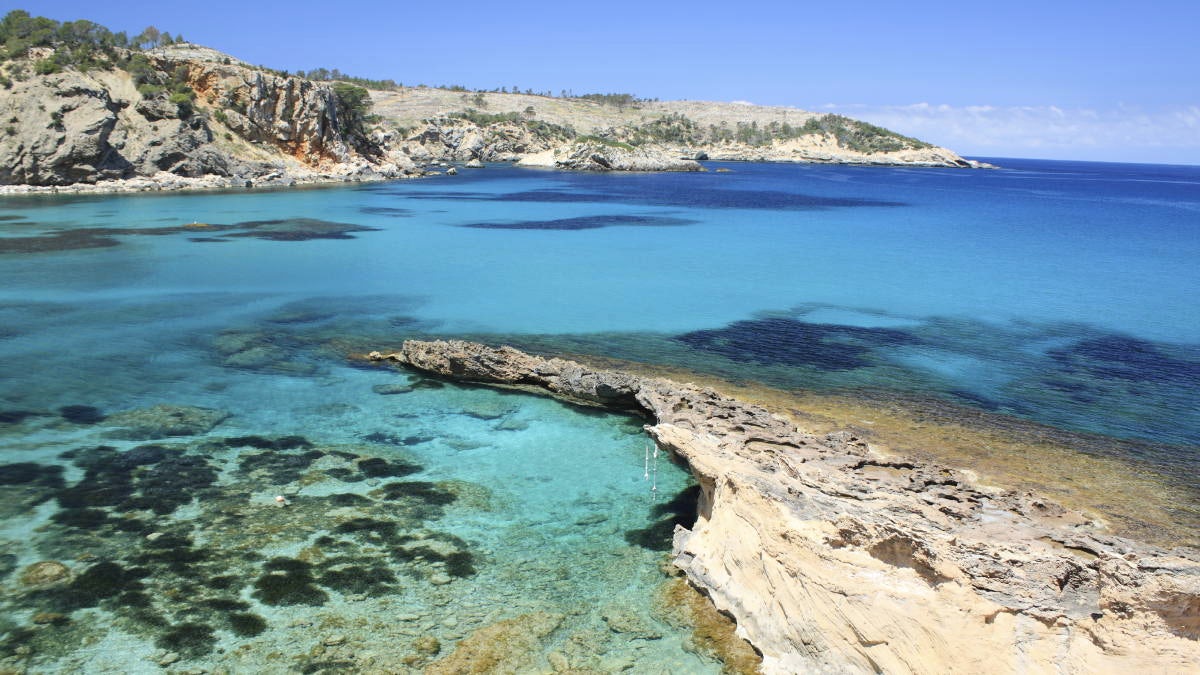
Ibiza is one of the Balearic Islands known for being one of the great tourist destinations in Europe when it comes to looking for sun, beach, gastronomy and lots of partying. It has 572 square kilometers and in a corner of its northern coast is the Cala Xarraca
Xarraca is one of the many coves that Ibiza has and today we will talk about it. How about thinking of Ibiza next summer?
Ibiza and its coves
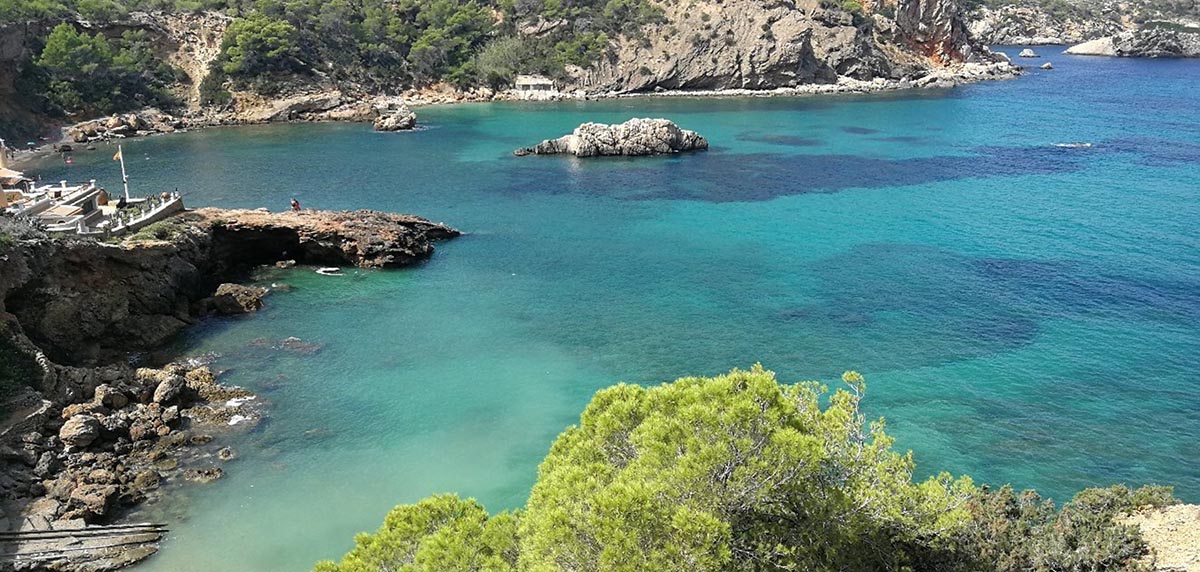
The coast of Ibiza is 210 kilometers long, the climate is great and its geography is varied. It was at the end of the '60s, the beginning of the' 70s when tourism began to arrive in earnest and with it the island began a greater development, beyond traditional economic activities such as agriculture and fishing.
Ibiza has beaches and coves. The Spanish call particularly small inlets "coves." But basically a cove is an inlet, a water inlet on the territory that is circular or at least rounded, with a narrow mouth. Think of a fairly closed and fairly small bay. That is a cove, and in Ibiza there are many.
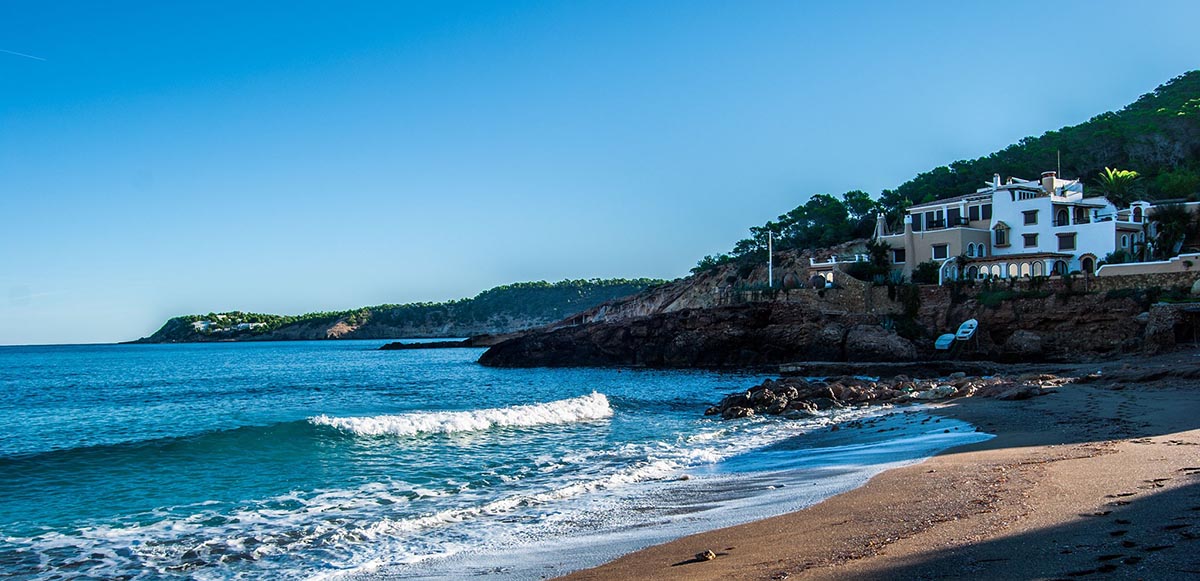
One of those beautiful coves is the Cala Xarraca. It is five kilometers from San Juan, north of the island. It is surrounded by rocks and has a length of 70 kilometers and 20 meters wide. It is a particular beach because it has a great unevenness so you have to be careful when getting into the water. What's more, there is a lot of posidonia, a lot, so some people prefer not to visit it.
What is Posidonia? A aquatic plant which is endemic to the Mediterranean Sea. It has roots, a stem and leaves, it blooms in autumn and bears fruit that, when detached, floats on the water and therefore looks like "sea olives".
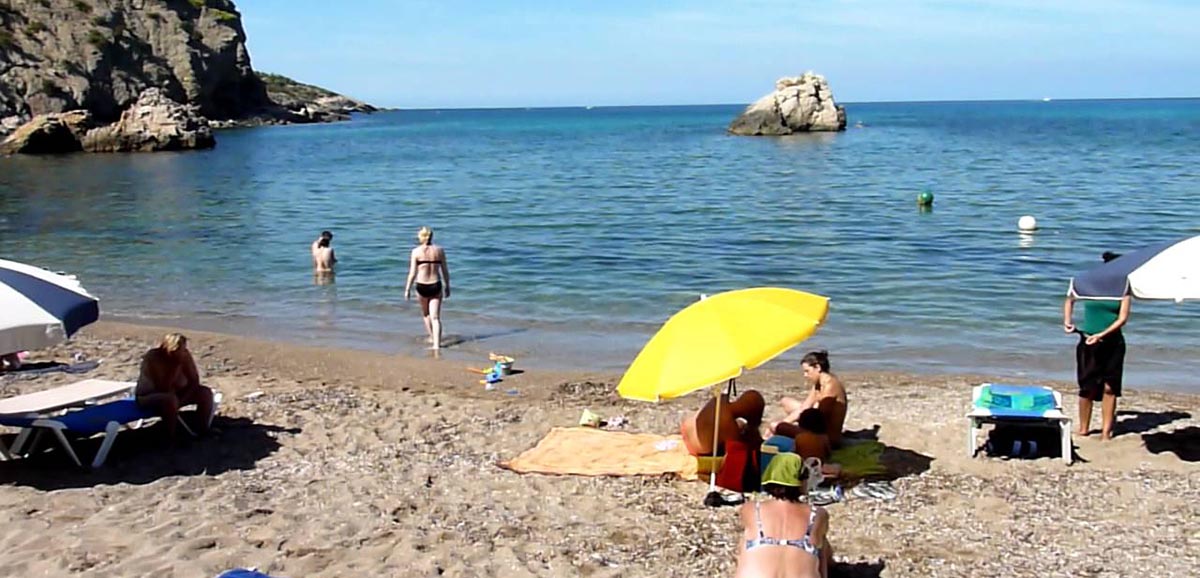
Cala Xarraca is 21 kilometers from Ibiza town and only 5 of Sant Joan, San Juan, between the tips of Xarraca and Sa Torre. It is difficult to get there by anything other than by car, There are many slopes, so you have to use the road that connects Ibiza with Portinatx, the C-733, and follow the indications to the small cove. At kilometer 17 the corresponding detour is well signposted.
Arrived here the cove has three beaches, two quite small and the largest measuring about 70 meters long by 20 wide, as we said above. The bay is accessed through the first beach that is right in front of the Cala Xarranca restaurant. In high season it can be a bit crowded, but this is where you can rent sunbeds and umbrellas.
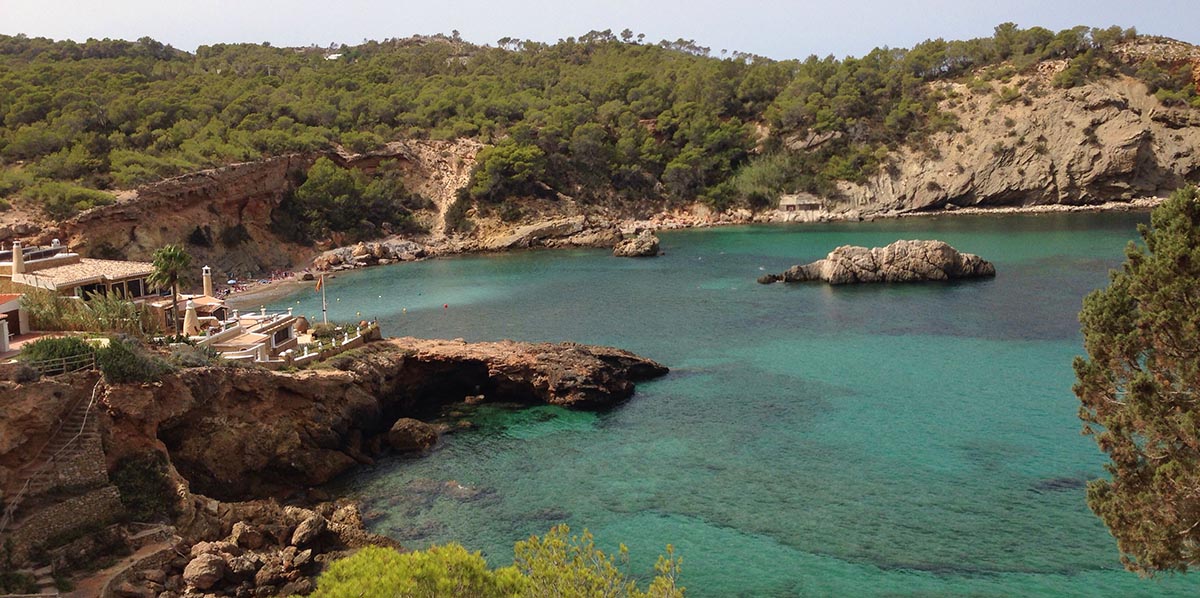
La sand is tan in color, somewhat thick, with small rocks and also, as we said, with a lot of posidonia, but the waters are crystal clear. Around it are cliffs, sheltering the small water inlet, studded with pine trees and some residential buildings. To the left of the entrance there is a path that takes you to the most secluded part of the cove because it is where there is more posidonia. Maybe people doing nudism or bathed in mud.
In front of this corner there is a small island. Between the coast and the islet, which you can reach by swimming, the waters are perfect for snorkelling or diving because the waters are crystal clear. In addition, precisely, the abundant presence of posidonia makes these waters have a lot of marine fauna since the plants achieve a particularly rich ecosystem for life of all kinds to develop.
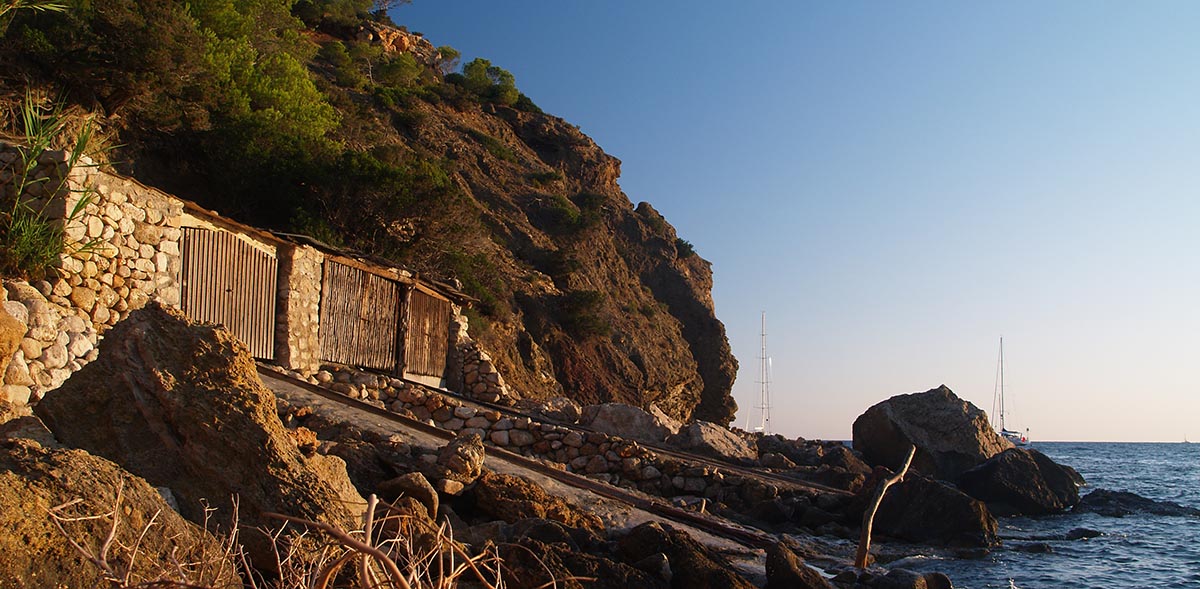
On the other hand, going to the right from the entrance to the cove are the fishermen's houses or dry docks. The sand is very scarce, almost nonexistent, and there is cement. Yes one concrete pad from whose end the vacationers jump into the water taking advantage of its height of two or three meters and the ropes that have been hung to climb again.
Remember that the beach, unlike many fillies, beaches and coves in Ibiza where when the waters recede a bit they are quite flat, it has a significant unevenness just a few meters from the shore. The rocks detached from the bottom and the vegetation make it undesirable to approach with boats, so if you arrive by boat it is best to anchor in Illot de sa Mesquida, close by, with a bed of sand, rocks and algae and at least six meters deep.
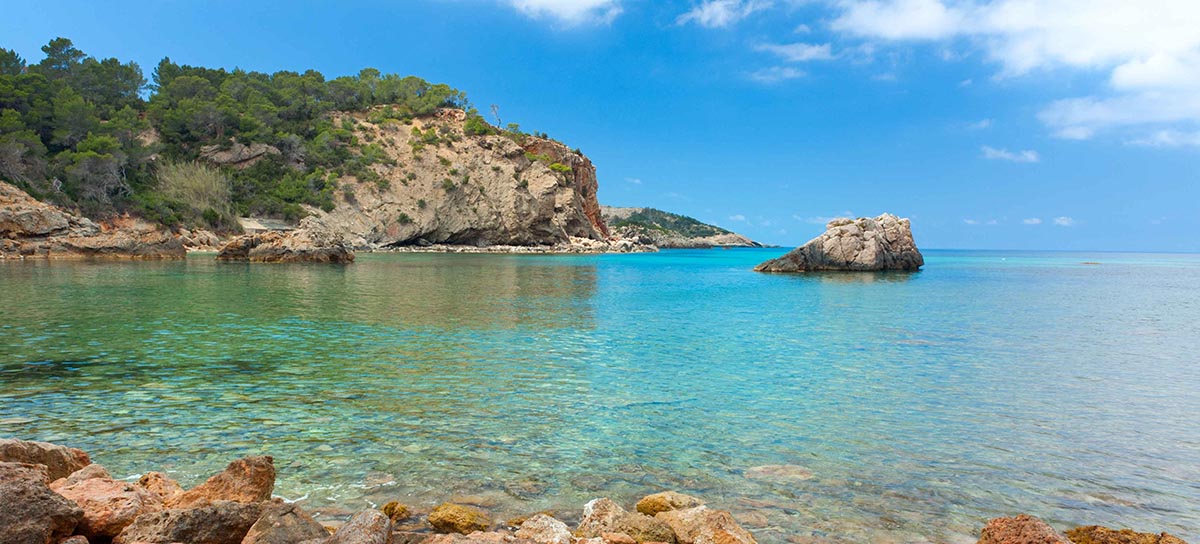
So, summarizing a bit: the beach is five minutes from San Juan. You can only get there by car and it is advisable to go early because the parking space is small. You can go with children. The water is crystal clear and you can snorkel. Sun loungers and umbrellas are rented and you can even take mud baths on the left side of the cove. Clay is said to have healing properties.
You can bring your own food but if you don't want to carry things There is a restaurant which for 30 years has been managed by the same family, the Tur. The restaurant is open every day in summer from 9 a.m. to 11:30 p.m., but closes between October and Easter. It is a beautiful place, quiet, with great views of the sea, the cliffs and the pine forests and a very Mediterranean menu.
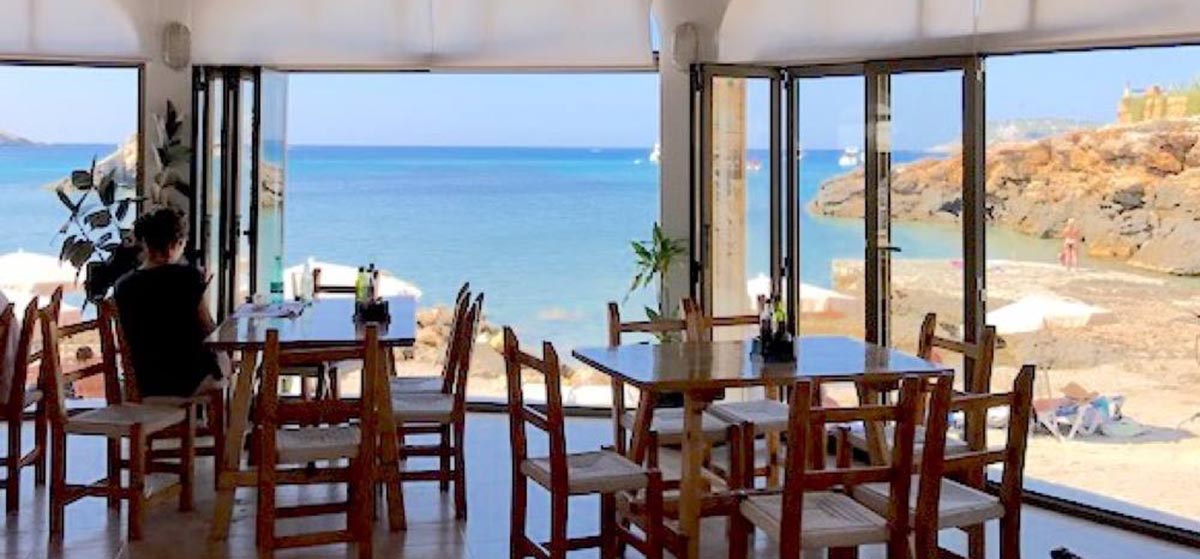
You can order fish paella, always with fresh fish, salads or meat dishes and dessert, the classic of the island, the clay (pudding with cinnamon, lemon and ensaimadas). In addition, if you arrive early and did not have breakfast, you can do it right here enjoying a coffee with toast. Finally, although the cove has no hotels, you can stay nearby in a hotel or apartment in Portinatx or San Juan.
One last piece of information: if you are fond of hiking and you love to walk there is an itinerary of 12, 77 kilometers that connects San Juan with Cala Xarraca. The first part crosses mountains and forests, passing through Font des Avencs, and reaches the Bay of Xarraca, which is where our picturesque cove is. On the way back you have to go up but it combines dirt sections with asphalt sections. And yes, the views of the coast are worth seeing and immortalizing with photographs.